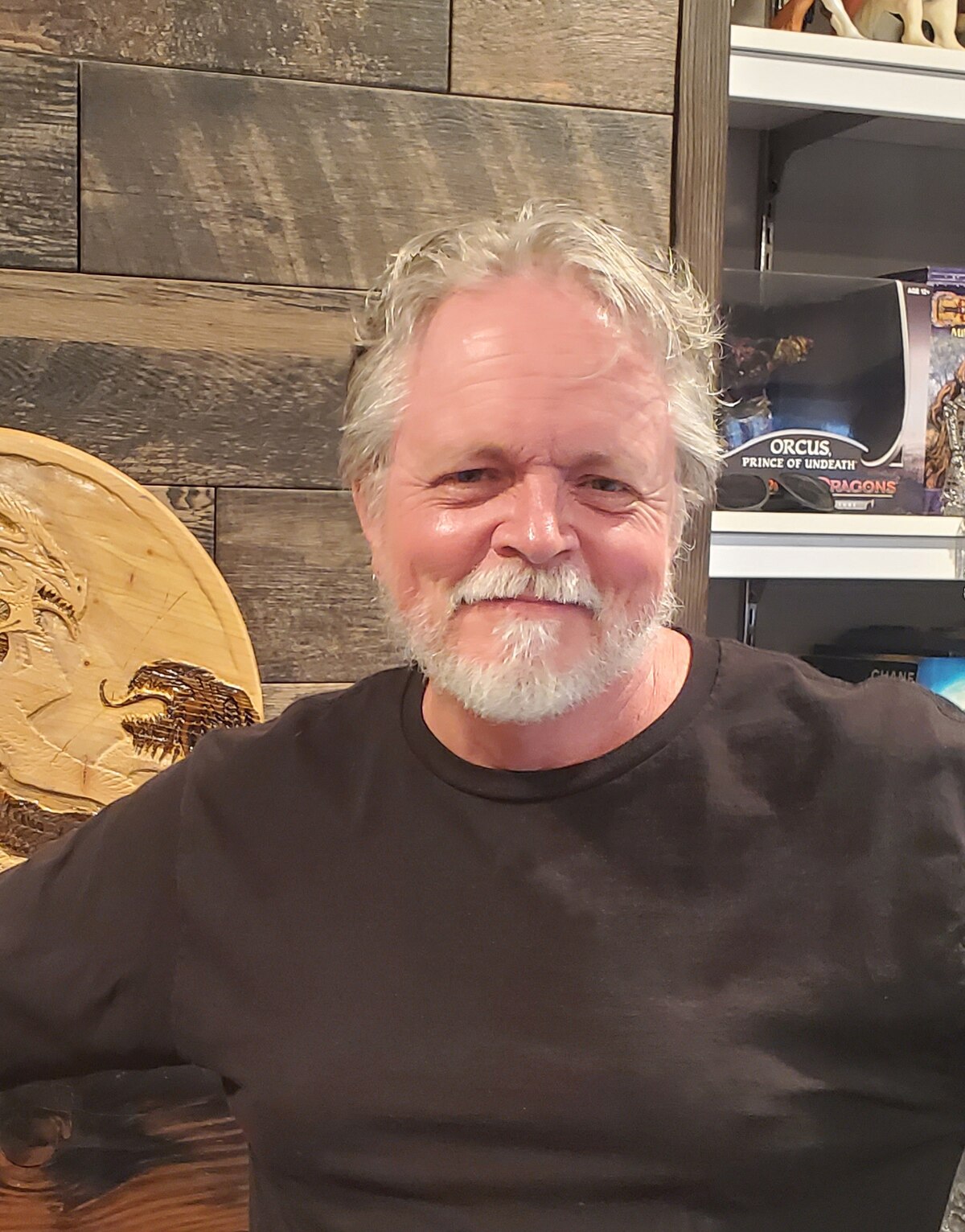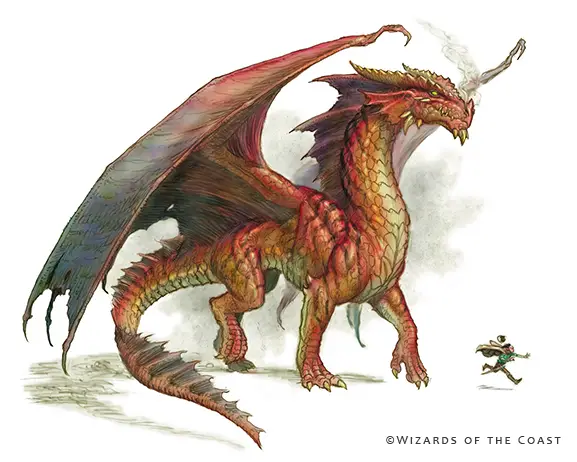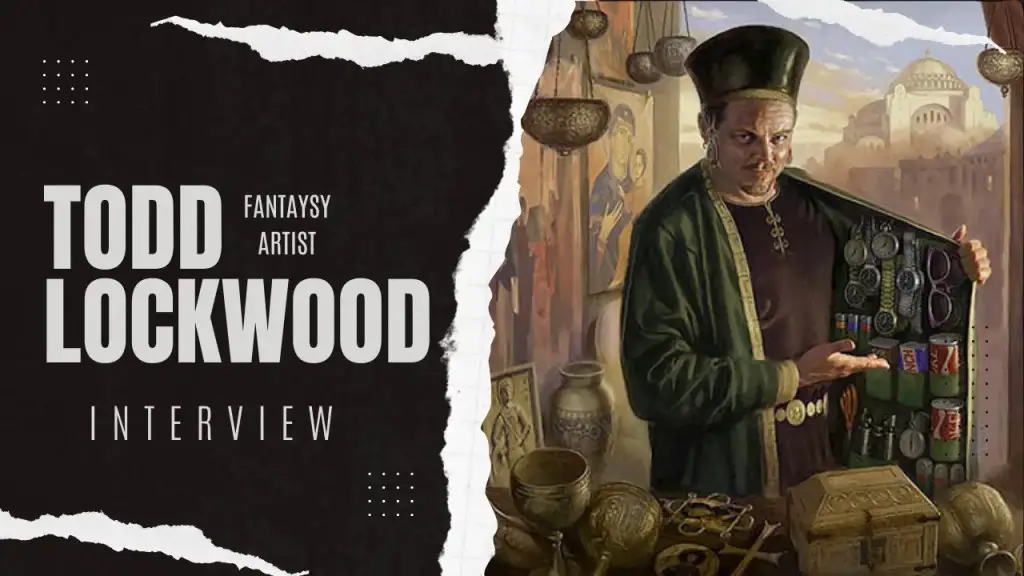Table of Contents
- Introduction
- Spotlight on Todd Lockwood
-
Interview with Todd Lockwood
- 1. Creating Magic: The Gathering artwork
- 2. The lasting inspiration of dragons
- 3. Defining the dragons of Dungeons & Dragons 3rd Edition
- 4. Choosing between digital and traditional mediums
- 5. Crafting book covers for fantasy authors
- 6. Early artistic influences from family
- 7. The evolving fantasy art industry
- 8. Balancing work on Dungeons & Dragons and Magic: The Gathering
- 9. Most meaningful projects from a long career
Introduction

In February 2025, we had the pleasure of conducting an exclusive interview with Todd Lockwood, a legendary fantasy artist known for his contributions to Dungeons & Dragons and Magic: The Gathering. His distinctive style has shaped the way dragons and other fantastical creatures are envisioned in modern fantasy art. Through this interview, Todd shared insights into his creative process, his influences, and his thoughts on the evolving landscape of fantasy illustration.
Spotlight on Todd Lockwood
Master of Fantasy Art
Todd Lockwood is a renowned fantasy and science fiction artist, celebrated for his impactful contributions to Dungeons & Dragons and Magic: The Gathering. His visionary art has redefined the portrayal of mythical creatures, especially dragons, setting new standards in modern fantasy illustration.
Early Life and Artistic Beginnings
Born and raised in Boulder, Colorado, Todd was immersed in a creative environment from a young age. One of his earliest memories is sitting on his father’s lap, watching him draw amusing cartoon animals. This nurturing atmosphere fostered his passion for art and storytelling, leading him to create his own comic books during childhood for personal enjoyment.
Educational Background and Career Shift
After high school, Todd attended the Colorado Institute of Art in Denver, primarily a design school where he acquired essential artistic fundamentals. He then spent fourteen years in the advertising industry. Near the end of this period, he sought more fulfilling work, which led him to the realm of fantasy art. His dedication and talent opened doors, and he soon became a member of TSR’s art staff, the original creators of Dungeons & Dragons.
Defining the Dragons of Dungeons & Dragons
One of Todd’s most significant achievements was designing the look and feel of the Third Edition of Dungeons & Dragons. Collaborating with fellow artist Sam Wood, Todd infused dragons with believable anatomy and a sense of realism, making them more tangible and awe-inspiring. His work has left a lasting impact on the game’s visual identity.
Transition to Freelance and Literary Pursuits
After his tenure with Wizards of the Coast, Todd transitioned to a freelance career, creating over twenty covers for R.A. Salvatore’s Drizzt novels, as well as works for authors like C.J. Cherryh, Tad Williams, and Marie Brennan. In recent years, his storytelling muse was reawakened, leading him to write and release his first novel, The Summer Dragon, with its sequel currently in progress.
Legacy and Ongoing Projects
Residing in Washington State, Todd continues to inspire both fans and fellow artists with his dynamic compositions and technical mastery. His journey from a young boy in Colorado to a celebrated fantasy artist and author exemplifies his dedication to his craft and his enduring influence on the fantasy art genre.
Interview with Todd Lockwood
You’ve created iconic Magic: The Gathering artwork, including “Niv-Mizzet, the Firemind” and “Angel of Despair”. How do you approach creating visually striking yet narratively rich pieces for such a beloved franchise?
I stand on the shoulders of giants! It’s all narrative. A painting has a subject and a verb, and hopefully context. Manipulate contrast to either draw the eye to something or to persuade the eye to keep looking. The most important thing is creating contrast and making it easy to read.
Dragons have become one of your artistic trademarks across various platforms, from Dungeons and Dragons to Magic: The Gathering. What is it about dragons that continues to inspire your work?
I like dragons. One of my oldest memories is of Maleficent turning into a dragon, as seen through the windshield of the family station wagon at the drive-in theater!

You played a key role in defining the look of the dragons for Dungeons and Dragons’ 3rd Edition. How did it feel to reinvent such iconic creatures, and what were some of the key elements you focused on?
Sam Wood and I shared a love of biology and anatomy, so we wanted them to be believable, first of all, and lean and efficient. Then we went to the original source: the black and white drawings that David Sutherland III did of the dragons in the very first Monster Manual. We took his designs and made them believable.
Your work spans traditional and digital mediums. How do you decide which medium to use for a particular piece, and do you have a preference between digital and traditional methods?
If I could paint digitally and have an oil painting at the end, I would have the best of both worlds—I don’t miss the smell, clean-ups, fumes, clean-up, or fumes, and clean-up. But! I love an oil painting. Anymore, I won’t get the oils out unless it’s an image I want to own.
Collaborating with fantasy authors like R.A. Salvatore on book covers must have its own unique challenges. How do you capture the essence of a character or a world in a single image for a book cover?
Long conversations with the editor and art director to find a scene or theme, then refer back to the answer to Q#1.
You’ve mentioned that your parents were artists and fostered a creative environment for you. How did their influence shape your development as an artist, and what was it like growing up in such a creative household?
Another one of my oldest memories is of sitting in my dad’s lap while he drew funny cartoon animals for me.
Your career has spanned decades, and you’ve seen significant changes in the fantasy art industry. What are some of the biggest shifts you’ve noticed, and how have they impacted your work?
I loathe A.I.
You’ve contributed to both Dungeons and Dragons and Magic: The Gathering, two of the most influential fantasy franchises. How do you approach balancing the distinct artistic demands of these two worlds?
I have had the opportunity to contribute base designs in both games, so it’s easy! Also, every set of MTG has an artistic style guide as a starting point.
Looking back at your career, is there a particular piece or project that stands out as your favorite or most meaningful, and what made it so special to you?
It’s too big a body of work for me to judge!

